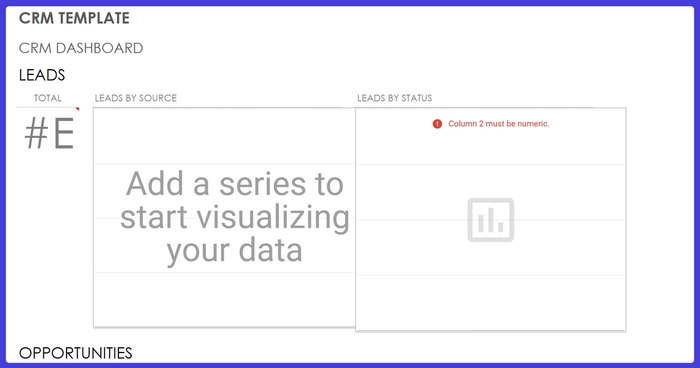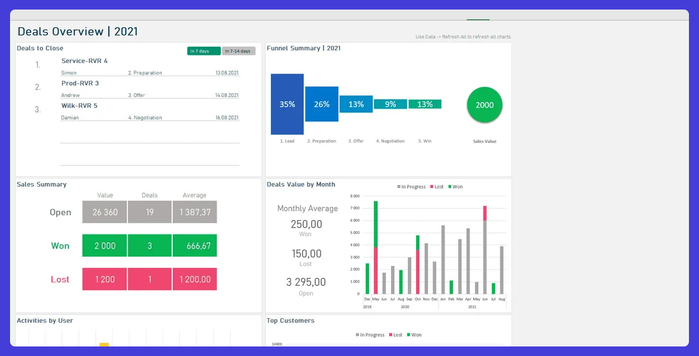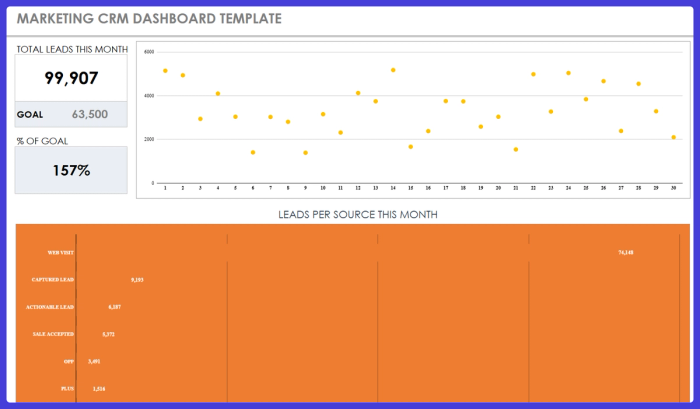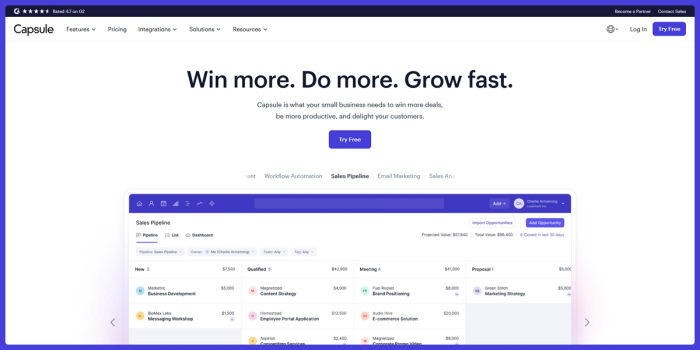Sales teams have long relied on Excel to organize workflows and manage customer data, and it got the job done for a time. However, as businesses grow and speed becomes critical, Excel’s limitations begin to show.
While Excel is a good starting point, it can quickly hold teams back, creating more manual work and less flexibility than today’s sales environment demands.
You'll find a few useful Excel CRM templates in this article – but we'll also discuss why they might not be the best long-term solution and what alternatives you have.
Excel CRM templates for your business
Below, you’ll find a selection of Excel CRM templates tailored to organize and centralize lead information across various use cases.
Excel-based CRM template for small businesses

This free CRM template offers a simple, no-fuss way to manage leads and opportunities – ideal for small businesses or solo entrepreneurs who need an intuitive solution. For teams just starting out, it’s simple enough to set up without a steep learning curve.
With fields like ‘Total Leads,’ ‘Leads by Source,’ and ‘Leads by Status,’ this template covers the sales tracking essentials. Since it’s available as an Excel or Google Sheets CRM template, it also offers flexibility – you can access it from anywhere or share it with your team. If you want to stay organized without investing in a very advanced CRM system right away, then this template is for you.
CRM Excel template for sales teams

Need a quick way to track all the critical sales details without the extras? This Excel CRM template is tailored for small sales teams. It covers everything from customer names and company details to estimated sales and next actions.
Unlike general templates, this one has specific sections for lead status (cold, warm, hot) and follow-up notes so your team can monitor each opportunity's progress.
It’s a good fit for teams who want a focused, no-frills solution to keep track of their contacts in one place.
Microsoft Excel CRM template for small teams and individuals

If you need a CRM template that goes beyond rows and columns, this Excel template brings your data to life with clear visual elements.
The template includes a ‘Deals Overview’ dashboard, showing every stage of the sales cycle – from lead to negotiation to closed deals – giving you a clear snapshot of what’s in the sales pipeline. The ‘Sales Summary’ breaks down wins, losses, and open deals so you can spot trends and act quickly.
The only downside of this template is that it’s purchase-only – there’s no option to try before you buy.
CRM Excel template for a sales department

Download this Excel CRM template here.
This CRM Excel template is designed to help sales professionals track their business data. It features organized tabs for storing contact details and company names, as well as a color-coded sales pipeline stage – providing users with an overview of their contacts and lead sources.
One useful feature is the ‘Lost Reason’ column, handy for tracking lost opportunities and analyzing them further to improve sales strategies.
CRM dashboard template for the marketing department

Download this CRM Excel template here.
This CRM Excel template offers a simple yet effective way to monitor results toward monthly goals. Its standout feature is a progress bar that shows the ‘% of Goal Achieved,’ which motivates sales teams to reach their targets.
Key metrics like ‘Total Leads This Month’ and ‘Goal’ provide a concise performance snapshot. In addition, the template tracks ‘Leads Per Source This Month,’ highlighting which lead-generation channels are working best.
The shortcomings of using Excel as a CRM
Don’t get us wrong – Excel is a fantastic tool for organizing data. However, it has a set of obstacles you should be aware of when managing customer relationships.
No collaboration features
Excel may work for simple tasks but is not suited for collaboration, especially in a growing team. Multiple people can’t work on the same spreadsheet without facing version issues or data conflicts. Updates happen offline, so team members often work with outdated information.
Problems with data volume and complexity
As your customer base grows, Excel fails to keep up. It wasn’t built to manage complex customer information, advanced workflows, or sales pipeline segmentation.
You’ll encounter endless rows of data that slow things down.
Manual entry errors
Unlike a dedicated CRM system, Excel lacks connections to other lead sources and doesn’t support automation. This results in inconsistencies and inaccuracies in your sales records, costing you valuable time and opportunities.
Challenging scalability
Excel may work for a small client base, but scaling creates roadblocks. As your business expands, adding new customers, tracking interactions, and organizing follow-ups become increasingly difficult.
Each new contact stretches the Excel spreadsheet further, burdening processes and creating confusion. Excel struggles to adapt to support a growing sales operation, limiting your team’s ability to scale effectively.
So, what's the solution if Excel isn’t cutting it for your CRM needs?
Modern CRM software can offer a far more effective approach to managing customer relationships.
Excel CRM template vs. modern CRM software
Imagine you’re managing a small sales team and using Excel to track leads and customer interactions. At first, this seems like a practical choice — after all, the software is familiar, and free templates are available!
But soon, you find that each team member spends 30 minutes a day updating spreadsheets, manually entering data, or chasing down the latest version.
With five team members, that adds up quickly:
- 30 minutes/day x five team members = 2.5 hours/day
- 2.5 hours/day x 20 working days/month = 50 hours/month
At an average hourly rate of $30, that’s $1,500 a month tied up in repetitive tasks.
And on top of that, the cost of an Office 365 license – roughly $130 per your five-person team monthly – adds another $1,560 to your annual budget.
Now, let’s consider the alternative with Capsule CRM’s Starter plan, priced at just $18 per user monthly.

For $90 a month (or about $1,080 annually), the whole team gains access to tools that go far beyond Excel’s manual processes.
- 30,000 contacts: There is plenty of space to organize customer relationships as your business grows – no more struggling with row limits or disorganized data.
- Email templates and AI-powered email assistant: Team members no longer have to spend time crafting each email from scratch. Reusable templates and AI assistance optimize the sales process.
- Shared mailbox: With Capsule, your team can access a shared inbox, so you don’t need to worry about your data being out of sync.
- Basic reporting and premium integrations: Integrations are where Excel struggles – connecting it with other tools requires workarounds, plugins, and often a lot of manual effort. Capsule, on the other hand, offers dozens of integrations that are quick to set up and easy to access.
- Advanced features: Capsule includes features like sales forecasting, pipeline management, and lead tracking. These give you insights that Excel simply can�’t match!
With Capsule CRM, you can become more prodcutive reduce manual tasks, and position your team for growth – all at a fraction of the hidden costs of using Excel.
And what’s even better? Capsule offers a free version, so you can start right away and leave spreadsheets behind.
Conclusion
Excel can handle basic tasks but quickly shows its limits as your business grows.
Accurate data management or tracking customer interactions can become more challenging with every new lead. Capsule CRM, a dedicated CRM software, eliminates these pain points by giving you a centralized platform to manage your entire sales process – without the hassle of manual data entry and outdated spreadsheets.
If you’re tired of Excel’s limitations holding your team back, try Capsule today and see how a proper CRM can make a difference!




